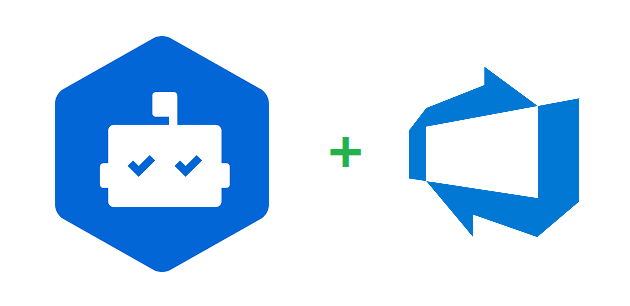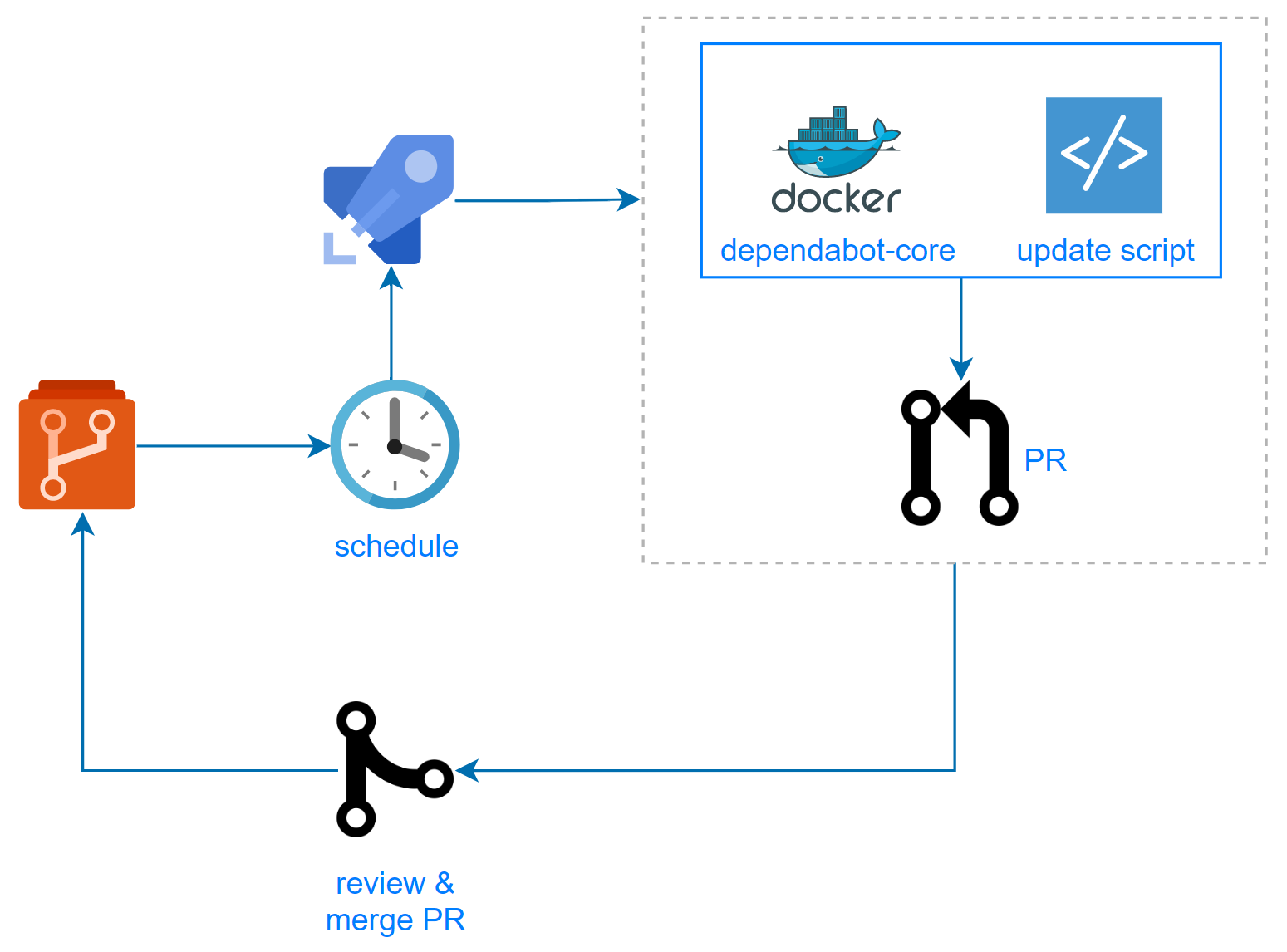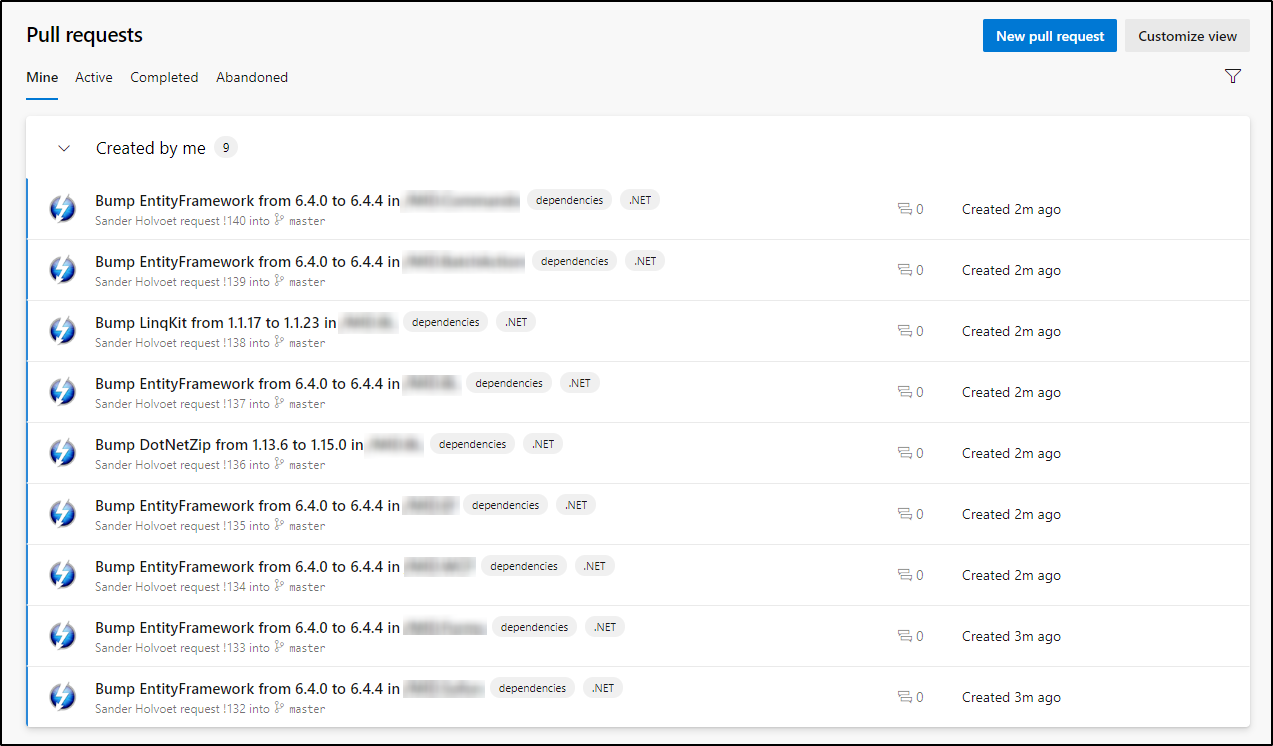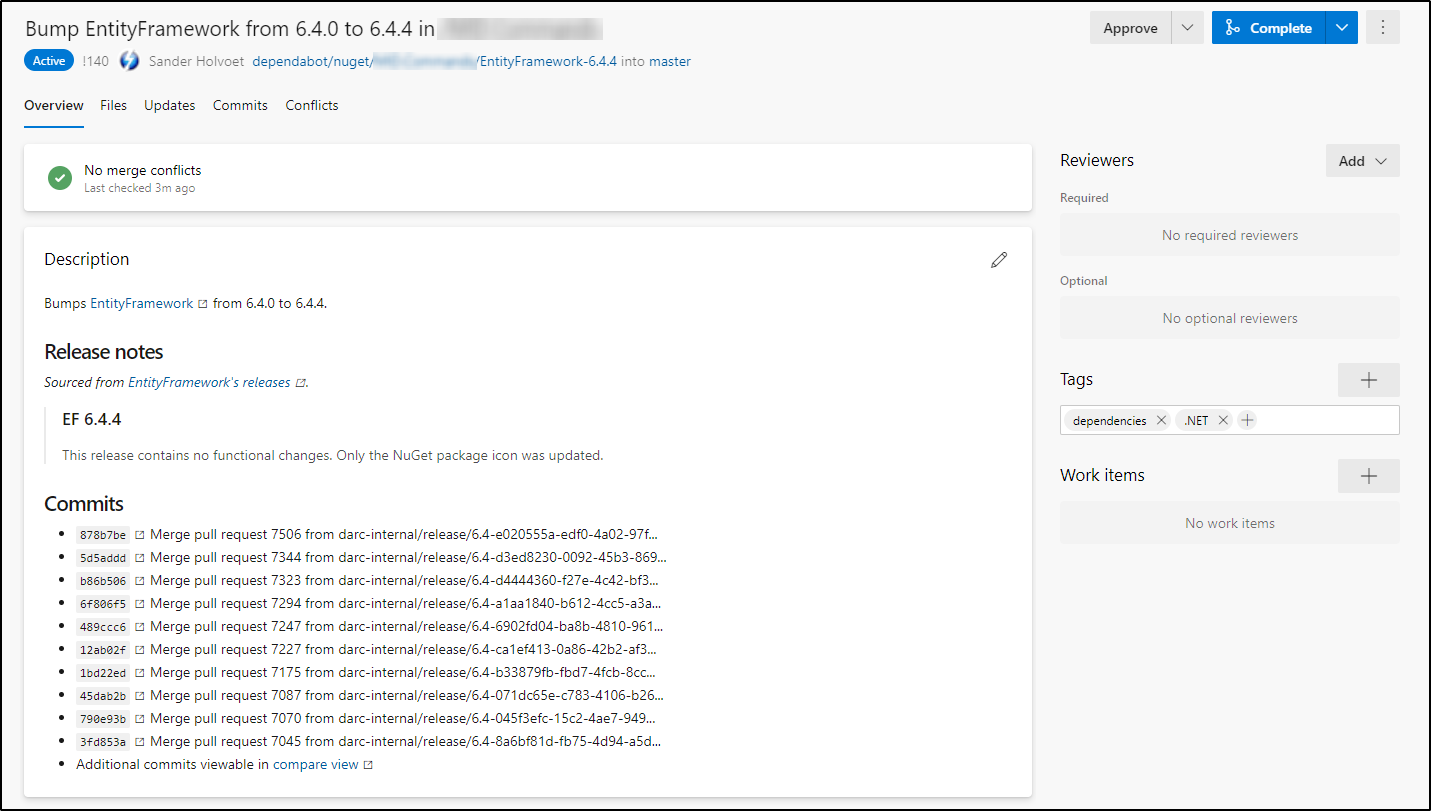Using Dependabot with Azure DevOps

Keeping track of any outdated dependencies can be a real nightmare, especially if you have lots of them. This is where Dependabot enters the ring.
From the Dependabot website:
- Dependabot pulls down your dependency files and looks for any outdated or insecure requirements.
- If any of your dependencies are out-of-date, Dependabot opens individual pull requests to update each one.
- You check that your tests pass, scan the included changelog and release notes, then hit merge with confidence.
The tool in question is actually completely free of charge (🤤), and natively integrates with GitHub ever since they acquired it in May 2019.
It currently supports the following languages:
- Ruby
- JavaScript
- Python
- PHP
- Elixir
- Rust
- Java (Maven + Gradle)
- .NET
- Go
- Elm
- Git Submodules
- Docker files
- Terraform files
- GitHub Actions
Workflow
Normally, you’d configure Dependabot by checking in a .dependabot/config.yml (reference) into your repo where you pass the type of package manager, how often to check for updates, location of your package manifest and so on. Have a look at the example below:
version: 1
update_configs:
- package_manager: "javascript"
directory: "/app"
update_schedule: "daily"
Unfortunately, there is no native integration with Azure DevOps 🤷♂️. However, using the Dependabot Update Script (which leverages the Dependabot Core logic), we can make 🤖 Dependabot play nice with Azure DevOps.
I’ve set up a pipeline which lets Dependabot work its magic in a .NET project containing multiple packages.config files.
- Clone the dependabot update script
- Pull
dependabot/dependabot-coreDocker image - Install dependencies
- Scan the entire repository for any
packages.configfiles, containing .NET dependencies - Dependabot automagically opens a separate PR for every out-of-date dependency
- Profit 🍾

Pipeline (YAML)
This is what the pipeline looks like:
pool:
vmImage: 'ubuntu-20.04'
schedules:
- cron: "0 0 * * *"
displayName: Daily Dependabot run
steps:
- script: |
git clone https://github.com/dependabot/dependabot-script.git
displayName: clone dependabot repo
- script: docker pull dependabot/dependabot-core
displayName: pull dependabot-core Docker image
- script: |
cd dependabot-script
docker run -v "$(pwd):/home/dependabot/dependabot-script" \
-w /home/dependabot/dependabot-script dependabot/dependabot-core bundle install \
-j 3 \
--path vendor
displayName: install dependencies
- task: Bash@3
inputs:
filePath: 'dependabot-devops.sh'
displayName: "run dependabot"
Let’s break things down…
Schedule
schedules:
- cron: "0 0 * * *"
displayName: Daily Dependabot run
As you can see from the schedules section, I’m using a scheduled trigger to run this pipeline on a regular interval (daily in this case). The format being used to define the schedule here is called cron syntax. Have look at the the Configure schedules for pipelines article over at MS Docs.
You could also use crontab guru which generates cron schedule expressions for you 🤯.
Fetch dependabot-script
- script: |
git clone https://github.com/dependabot/dependabot-script.git
displayName: clone dependabot repo
In the first step, we’re simply cloning the dependabot-script repository, which we’ll need later on to run our Docker image.
Pull Docker image
- script: docker pull dependabot/dependabot-core
displayName: pull dependabot-core Docker image
Pull the dependabot/dependabot-core image from 🐳 Docker Hub, which contains the core logic behind Dependabot’s update PR creation.
Install dependencies
- script: |
cd dependabot-script
docker run -v "$(pwd):/home/dependabot/dependabot-script" \
-w /home/dependabot/dependabot-script dependabot/dependabot-core bundle install \
-j 3 \
--path vendor
displayName: install dependencies
Here we first navigate to the dependabot-script directory which we cloned earlier. Then we launch a Docker container, based on the dependabot-core image we just downloaded. We’re using the docker run command, supplied with the following parameters:
-v: mount the current working directory (dependabot-script) into the container.-w: set the working directory to/home/dependabot/dependabot-script.
We then run bundle install -j 3 --path vendor inside the container, which will install the necessary dependencies in order to get Dependabot up and running. We’re using the following parameters:
-j: the number of parallel download & install jobs to use,3in this case (instead of the default1).--path: location where our dependencies will be installed,vendorin this case.
Run bash script
- task: Bash@3
inputs:
filePath: 'dependabot-devops.sh'
displayName: "run dependabot"
Finally, we’ll run the bash script, make sure the filePath is set correctly.
You could also copy and paste the contents of the script below and run it inline.
Bash script
The dependabot-devops.sh Bash script is where the actual 🔎 scanning takes place. Here’s the complete GitHub Gist which you can download & commit to your repo:
Setting up variables
SYSTEM_COLLECTIONURI_TRIM=`echo "${SYSTEM_COLLECTIONURI:22}"`
PROJECT_PATH="$SYSTEM_COLLECTIONURI_TRIM$SYSTEM_TEAMPROJECT/_git/$BUILD_REPOSITORY_NAME"
As you can see, I make use of a couple of predefined variables within Azure DevOps in order to make the script as generic as possible.
SYSTEM_COLLECTIONURI: The URI of the TFS collection or Azure DevOps organization. For examplehttps://dev.azure.com/fabrikamfiber/. This variable gets trimmed in order to get rid of thehttps://dev.azure.com/portion.SYSTEM_TEAMPROJECT: The name of the team project that contains the pipeline.BUILD_REPOSITORY_NAME: The name of the triggering repository.
The variables above are appended and used to construct the $PROJECT_PATH. The variable contains the remote which Dependabot will need in order to know where exactly it needs to create any pull requests. The $PROJECT_PATH will look like this: <org>/<project>/_git/<repo>.
Scan for package manifests
FILECOUNT="$(find . -name packages.config | wc -l)"
echo "Found $FILECOUNT dependency file(s)."
find . -name packages.config | while read path; do
PARENTNAME="$(basename "$(dirname "$path")")"
DIRECTORY_PATH="/"$PARENTNAME
echo "directory: $DIRECTORY_PATH"
I then use the find . -name packages.config command to find any packages.config files contained within the repository. These are the dependency files or package manifests which Dependabot needs to detect your actual dependencies. Dependabot just needs the location where to look for any package manifests, which is stored in the $DIRECTORY_PATH variable.
Docker run 🚀
I then run the dependabot-core container for any package manifest (packages.config in case of my .NET project) that was found.
docker run -v "$(pwd)/dependabot-script:/home/dependabot/dependabot-script"
-w '/home/dependabot/dependabot-script'
-e AZURE_ACCESS_TOKEN='<PAT>'
-e PACKAGE_MANAGER='nuget'
-e PROJECT_PATH=$PROJECT_PATH
-e DIRECTORY_PATH=$DIRECTORY_PATH
dependabot/dependabot-core bundle exec ruby ./generic-update-script.rb
As you can see there are a whole bunch of environment variables (-e <...>) being passed to our Docker container:
AZURE_ACCESS_TOKEN: Azure DevOps PAT which allows to Dependabot to create PR’s within Azure DevOpsPACKAGE_MANAGER: What package manager to use (nugetin case of my .NET project)PROJECT_PATH: see my earlier explanation about the$PROJECT_PATHvariableDIRECTORY_PATH: see my earlier explanation about the$DIRECTORY_PATHvariable- (optional)
GITHUB_ACCESS_TOKEN: you might run into API rate limits depending on how often you run the pipeline. Create a GitHub PAT and add-e GITHUB_ACCESS_TOKEN <PAT>to increase these limits.
⚠️ Upon creating the Azure DevOps personal access token, make sure you check the Code scope so Dependabot has enough permissions to raise any PR’s.

The dependabot/dependabot-core bundle exec ruby ./generic-update-script.rb command runs a ruby script inside the dependabot/dependabot-coreDocker container which does the actual magic of scanning for any outdated dependencies, parsing the package manifest(s) and creation of the pull request(s).
Results
This is what the end result looks like:


Dependabot created a separate branch for any outdated package it found, and raised a pull request 🔥🔥🔥.
Combined with the necessary branch policies (e.g. build validation), you could make sure any updated packages won’t break your build. All in all a great tool which takes care of dependency scanning for you 💪.

Comments